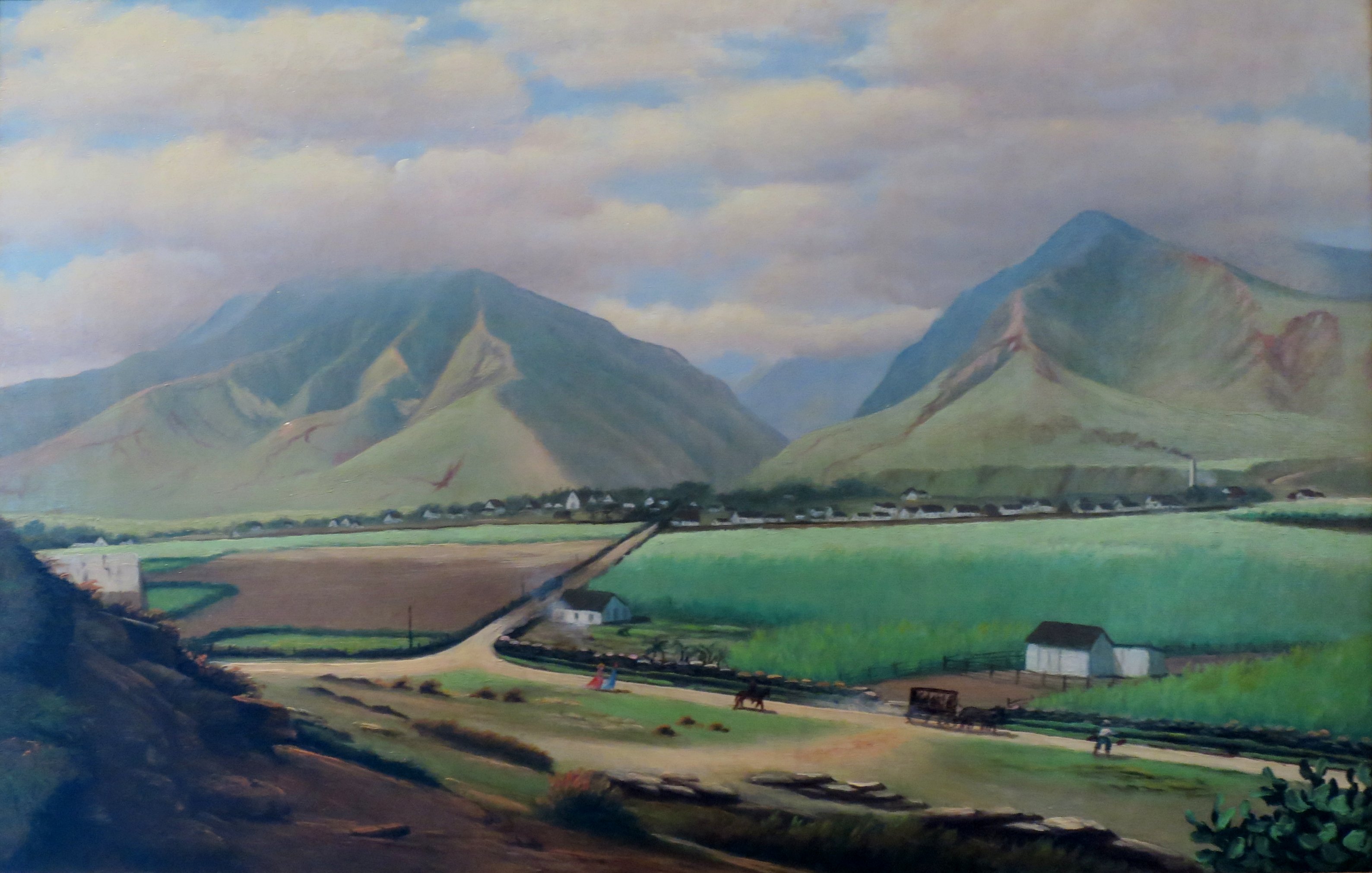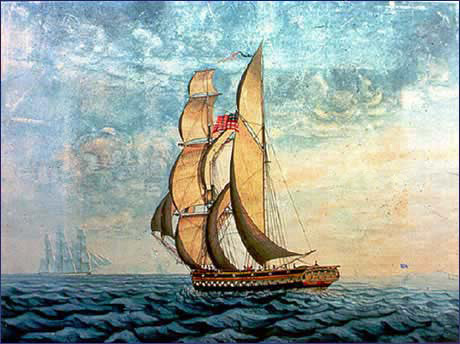|
Bailey House Museum
Hale Hōʻikeʻike at the Bailey House (House of Display at Old Bailey House, formerly and commonly the Bailey House Museum) is a museum of Hawaiian history and art located in Wailuku, on the island of Maui, in Hawaii. It is owned and operated by the Maui Historical Society.Maui Historical Society . accessed 3.23.2013 Old Bailey House is a within the Wailuku Civic Center Historic District, and is on the . Buil ...
|
Wailuku, Hawaii
Wailuku is a census-designated place (CDP) in and county seat of Maui County, Hawaii, United States. The population was 17,697 at the 2020 census. Wailuku is located just west of Kahului, at the mouth of the Iao Valley. In the early 20th century Wailuku was the main tourist destination on Maui, though it has since been eclipsed with the rise of the resort towns such as Kaanapali. Historic sites in the town include Kaʻahumanu Church (named after Queen Kaʻahumanu, wife of Kamehameha I) which dates to 1876, the Wailuku Civic Center Historic District, the site of the Chee Kung Tong Society Building, and the Bailey House, a 19th-century former seminary and home that houses a history museum and the Maui Historical Society. There are two ancient temples near Wailuku, called — the Halekiʻi Heiau and the Pihanakalani Heiau. Both date back hundreds of years and were used for religious purposes by the native Hawaiians. Wailuku is served by Kahului Airport. Geography Wail ... [...More Info...] [...Related Items...] OR: [Wikipedia] [Google] [Baidu] |
Maui County
Maui County, officially the County of Maui, is a county in the U.S. state of Hawaii. It consists of the islands of Maui, Lānai, Molokai (except for a portion of Molokai that comprises Kalawao County), Kahoolawe, and Molokini. The latter two are uninhabited. As of the 2020 census, the population was 164,754. The county seat is Wailuku. Maui County is included in the Kahului-Wailuku-Lahaina, HI Metropolitan Statistical Area. Government Maui County has a quasi- mayor-council form of municipal government. Unlike traditional municipal governments, the county government is established by the state legislature by statute and is not chartered. Executive authority is vested in the mayor, elected by the voters on a nonpartisan basis to a four-year term (with a limit of two consecutive full terms). Legislative authority is vested in the nine-member county council. All seats in the county council have residency requirements, but all Maui County voters may vote in elections for all nine ... [...More Info...] [...Related Items...] OR: [Wikipedia] [Google] [Baidu] |
Kingdom Of Hawaii
The Hawaiian Kingdom, or Kingdom of Hawaiʻi ( Hawaiian: ''Ko Hawaiʻi Pae ʻĀina''), was a sovereign state located in the Hawaiian Islands. The country was formed in 1795, when the warrior chief Kamehameha the Great, of the independent island of Hawaiʻi, conquered the independent islands of Oʻahu, Maui, Molokaʻi and Lānaʻi and unified them under one government. In 1810, the whole Hawaiian archipelago became unified when Kauaʻi and Niʻihau joined the Hawaiian Kingdom voluntarily. Two major dynastic families ruled the kingdom: the House of Kamehameha and the House of Kalākaua. The kingdom won recognition from the major European powers. The United States became its chief trading partner and watched over it to prevent other powers (such as Britain and Japan) from asserting hegemony. In 1887 King Kalākaua was forced to accept a new constitution in a coup by the Honolulu Rifles, an anti-monarchist militia. Queen Liliʻuokalani, who succeeded Kalākaua in 1891, trie ... [...More Info...] [...Related Items...] OR: [Wikipedia] [Google] [Baidu] |
Extinct Species
This page features lists of extinct species, organisms that have become extinct, either in the wild or completely disappeared from Earth. In actual theoretical practice, a species not definitely located in the wild in the last fifty years of current time is textually called "extinct". Plants * List of recently extinct plants Animals By region * List of African animals extinct in the Holocene ** List of extinct animals of Réunion * List of Asian animals extinct in the Holocene ** List of extinct animals of India ** List of extinct animals of the Philippines * List of European animals extinct in the Holocene ** List of extinct animals of Catalonia ** List of Caucasian animals extinct in the Holocene ** List of extinct animals of the British Isles *** Extinct animals from the Isle of Man ** List of extinct and endangered species of Italy ** List of extinct and endangered species of Lithuania ** List of extinct animals of the Netherlands ** List of extinct animals of the Nord ... [...More Info...] [...Related Items...] OR: [Wikipedia] [Google] [Baidu] |
List Of Non-marine Molluscs Of Hawaii
The non-marine molluscs of Hawaii are part of the molluscan fauna of Hawaii, which in turn is part of the ( wildlife of Hawaii). A number of species of non-marine molluscs are found in the wild in Hawaii. In addition there are at least ? gastropod species living as hothouse aliens, only in greenhouses, aquaria, and terraria. There are ??? species of gastropods ?? species of freshwater gastropods, ?? species of land gastropods and ?? species of bivalves living in the wild in the Hawaiian Islands. There are ?? non-indigenous species of gastropods (?? freshwater and ?? land species) and ?? species of bivalves in the wild in Hawaii. This is altogether a total of ?? freshwater non-indigenous species of wild molluscs. ;Summary table of number of species (The summary table is based on species counted in this list, and also includes also those species with question marks) Extinct gastropods in Hawaii include: .... Shells of local land snails which were collected by David Dwight B ... [...More Info...] [...Related Items...] OR: [Wikipedia] [Google] [Baidu] |
Introduced Species
An introduced species, alien species, exotic species, adventive species, immigrant species, foreign species, non-indigenous species, or non-native species is a species living outside its native distributional range, but which has arrived there by human activity, directly or indirectly, and either deliberately or accidentally. Non-native species can have various effects on the local ecosystem. Introduced species that become established and spread beyond the place of introduction are considered naturalized. The process of human-caused introduction is distinguished from biological colonization, in which species spread to new areas through "natural" (non-human) means such as storms and rafting. The Latin expression neobiota captures the characteristic that these species are ''new'' biota to their environment in terms of established biological network (e.g. food web) relationships. Neobiota can further be divided into neozoa (also: neozoons, sing. neozoon, i.e. animals) and neophyt ... [...More Info...] [...Related Items...] OR: [Wikipedia] [Google] [Baidu] |
David Dwight Baldwin
David Dwight Baldwin (November 26, 1831 – June 16, 1912) was a businessman, educator, and biologist on Maui in the Hawaiian islands. Within biology he is known for his contributions to the study of Hawaiian land snails, part of malacology. Life David Dwight Baldwin was born November 26, 1831 in Honolulu. His father was early missionary doctor Dwight Baldwin (1798–1886), and his mother was Charlotte Fowler Baldwin (1805–1873). After a few years living in Waimea, the family moved to the island of Maui around 1837. From 1841 through 1851, Baldwin attended Punahou School in Honolulu, and graduated from Yale in 1857. He married Lois Gregory Morris (1837–1924) on October 7 of that year at Bridgeport, Connecticut. The couple returned to the Kingdom of Hawaii in 1858, and had nine children, although one died young. From 1860 to 1862 Baldwin served in the Kingdom House of Representatives. Around 1865 he became manager of the sugarcane plantation in Kohala on the northern coas ... [...More Info...] [...Related Items...] OR: [Wikipedia] [Google] [Baidu] |
Land Snail
A land snail is any of the numerous species of snail that live on land, as opposed to the sea snails and freshwater snails. ''Land snail'' is the common name for terrestrial gastropod mollusks that have shells (those without shells are known as slugs). However, it is not always easy to say which species are terrestrial, because some are more or less amphibious between land and fresh water, and others are relatively amphibious between land and salt water. Land snails are a polyphyletic group comprising at least ten independent evolutionary transitions to terrestrial life (the last common ancestor of all gastropods was marine). The majority of land snails are pulmonates that have a lung and breathe air. Most of the non-pulmonate land snails belong to lineages in the Caenogastropoda, and tend to have a gill and an operculum. The largest clade of land snails is the Cyclophoroidea, with more than 7,000 species. Many of these operculate land snails live in habitats or microhabitats ... [...More Info...] [...Related Items...] OR: [Wikipedia] [Google] [Baidu] |
Kamehameha II
Kamehameha II (November 1797 – July 14, 1824) was the second king of the Kingdom of Hawaii. His birth name was Liholiho and full name was Kalaninui kua Liholiho i ke kapu ʻIolani. It was lengthened to Kalani Kaleiʻaimoku o Kaiwikapu o Laʻamea i Kauikawekiu Ahilapalapa Kealiʻi Kauinamoku o Kahekili Kalaninui i Mamao ʻIolani i Ka Liholiho when he took the throne. Early life Kamehameha II was born in the month of Hanaiaʻeleʻele (corresponding to November) 1797 in Hilo, on the island of Hawaiʻi, the first born son of Kamehameha I with his highest-ranking wife Keōpuolani. It was originally planned that he would be born at the Kūkaniloko birth site on the island of Oʻahu but the Queen's sickness prevented travel. Given in care to his father's trusted servant Hanapi, who took the child to rear him in the lands of Kalaoa in Hilo Paliku, he was taken back, after five or six months, by his maternal grandmother Kekuʻiapoiwa Liliha because she felt he was not getting ... [...More Info...] [...Related Items...] OR: [Wikipedia] [Google] [Baidu] |
Hawaiian Mythology
Hawaiian religion refers to the indigenous religious beliefs and practices of native Hawaiians, also known as the kapu system. Hawaiian religion is based largely on the tapu religion common in Polynesia and likely originated among the Tahitians and other Pacific islanders who landed in Hawaii between 500 and 1300 AD. It is polytheistic and animistic, with a belief in many deities and spirits, including the belief that spirits are found in non-human beings and objects such as other animals, the waves, and the sky. It was only during the reign of Kamehameha I that a ruler from Hawaii island attempted to impose a singular "Hawaiian" religion on all the Hawaiian islands that was not Christianity. Today, Hawaiian religious practices are protected by the American Indian Religious Freedom Act. Traditional Hawaiian religion is unrelated to the modern New Age practice known as " Huna".Rothstein, Mikael, in Lewis, James R. and Daren Kemp. ''Handbook of New Age''. Brill Academic Publisher ... [...More Info...] [...Related Items...] OR: [Wikipedia] [Google] [Baidu] |






